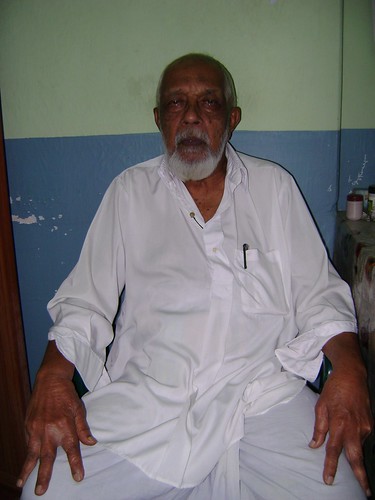As a child it was a daily ritual going down to the Seethi Thangal’s pandikasala (or godown) in the afternoon. It situated right next to
Pulikkakkadavu; where none of us goes unless one want to cross the canal (which you don’t normally do or require).
The pandikasala housed the branch post office in our village. This post office first used to be the branch of Chowghat (renamed Chavakkad) main post office but later on assigned under the Mullasseri. This required that all the letters bore an additional address line showing the main post office (thus we write “(Via) Chowghat” or “(Via) Mullasseri”).
The post office is kept open for two hours (3 – 5 in the evening); a post master and a postman were the employees. The postman had to collect our incoming letters from the main post office as well as deliver the outgoings. He used his bicycle to do this but in case the man doesn’t know cycling he had to walk 4 k.ms up and down from Mullasseri (read no buses to Padoor at that time).
Once the letter bag reached our post office, our postman has to affix the date stamp on each of the incoming letters. Then he used to read out the names of the addressees. The village folks who gathers around his at the time of this ritual could collect letters for their family; or letters meant for their neighbors. If you don’t do that, the letter gets delivered at your house at the postman’s convenience.
As children it was fun going to check out if our family had any letters (most of the days you don’t get one) but some of us made it a point to be regularly present at the time anyway.
This was the only time when the pandikasala building appeared to be with any life. Otherwise it had all the appearance of a perfect ghost-house.
Apart from the post office, the pandikasala had another large room, with an array of wooden planks positioned together for an entrance. The planks were fastened by a thick iron lever running through them on both sides and which were latched to a lock fitted to the central plank. The room remained locked perennially. Two windows type shop-counters were seen on the sides but these too remained tightly shut.
Curious sounds were coming out of the room even in the broad day light hours. But we know these were coming from the bunch of flying bats that were breeding freely in the safety of the darkness of the perpetually closed room.
A small room with a single door and a single window at the western end was used by Mr. Seethi Thangal as his office was in intermittent use. The never in use upstairs consisted of a decent sized hall that could hold 40 – 50 people easily.
The baked clay tiled roofs, bare red laterite walls and the wooden ceilings had all given the building a perfect classical look. Contrary to the ghostly atmosphere and appearance, the elders say that the building used to be the centre of active commerce when the water transport was relied upon for movement of goods. The building – which I had seen in my childhood - was built post the 1941 Cyclone when the original building gave in to the nature’s forces.
The glorious days were well past; however, the existence of our post office ensured that pandikasala continued to be a signpost until 1980s. This was the time when the post office was shifted to a new location having been upgraded in to a Sub Post Office (Pincode #680524).
A new building replaced the Pandikasala about 10 years ago but the newly built
Pulikkakkadavu bridge alignment road completely obscured its sight. Sadly, this new building too thereafter remained in a state of disuse.





